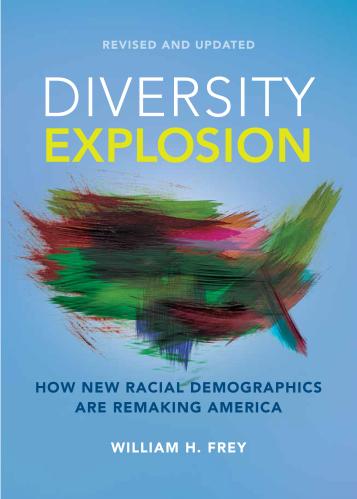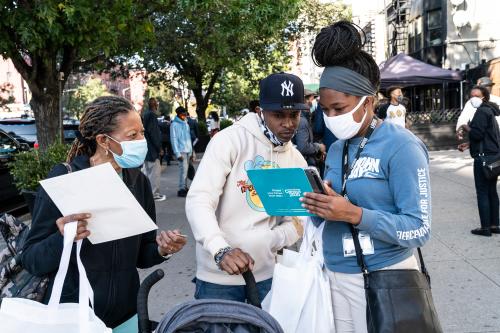Last month, the Census Bureau released long-awaited 2020 population data showing that—for the first time—the nation’s white population declined across the previous decade. Cue the fears of “white replacement” stoked by Donald Trump and many of his followers, who advanced a culture war that now stands at the core of our politics.
However, America’s white population could be facing a different kind of fear—one that is demographic rather than cultural. This is the specter of living in a slow-growing, fast-aging, and less productive nation, where government support for older generations dwindles due to a shrinking tax base. Not only is the white population declining, but it is also getting older, as the large baby boomer generation continues to enter its post-labor-force ages.
Yet the new census data tells us that help is on the way in the form of new growing generations made up of people of color. What these people—who identify as Latino or Hispanic, Asian American, Black, Native American, or two or more races (including whites)—represent is the new engine of population growth, with an emphasis on youth.
One less flashy finding from the 2020 census is the fact that America’s under-age-18 population declined nationally (by 1 million) and in 27 states during the 2010s. At the same time, the 65- to 74-year-old population is estimated to increase by almost half. This suggests that that we could be facing high levels of what demographers call “age dependency,” in which the number of seniors starkly rises in relation to the people of working ages who must support them through taxes and national productivity. It is a far cry from the years when baby boomers themselves were young: In 1960, people under age 18 made up a whopping 35% of the U.S. population, dipping now to just 22%.
The decline in the number of white young people has been the major cause of this youth population loss. Most of the overall white population decline between 2010 and 2020 occurred among those under age 18 (-5.1 million)—the result, in large part, of fewer births to an aging population. In fact, there was already a loss of white youth in the previous decade such that, over the first 20 years of this century, the white young population declined by over 9 million while the white baby boomer generation continued to age.
What saved the nation from a spectacular loss of youth were contributions from young people of color. Because immigrants and their U.S.-born children, together, are younger than the rest of the population, recent decades’ immigration from Latin America, Asia, and elsewhere bolstered the size of the nation’s child population. The new 2010-20 census numbers show that Latino or Hispanic children, Asian American children, and children identifying as two or more races contributed most (over 4 million) to youth population gains.

For the first time, children of color now comprise more than half (53%) of the nation’s total youth population, as well as in 21 states. Population projections taken even before the 2020 census showed that more than half of the young labor force population will be nonwhite in 2030. Clearly, children of color have not only stemmed a sharp decline in the youth population but, as they age, will be driving most of the growth in the nation’s future labor force.
These are facts that fearful white Americans need to know. The nation continues be at the thrust of a significant age and generational change. Our child population, now experiencing flat growth, will be feeding into a modestly growing labor force that will need to support the rapidly growing senior population’s Social Security and Medicare needs as well the nation’s ongoing productivity. And the major engine of any future growth among the young is a new generation of children born into families of color—the largest groups of whom stand on the wrong side of rising race and ethnic inequalities, according to the most recent Annie E. Casey Foundation Kids Count report.
The 2020 census results ought not be used to scare segments of the white population as part of a political culture war. Rather, they should be cause for optimism among young and old alike, and enlightened leaders at all levels of government should use them to demonstrate the important demographic contributions that an array of racial and ethnic groups are bringing to our current and likely future demographic and economic growth. If we want an America that continues to uphold its obligations to older generations, we need to value and invest in our diverse youth.








Commentary
America’s shrinking white population needs to value youthful diversity
September 9, 2021